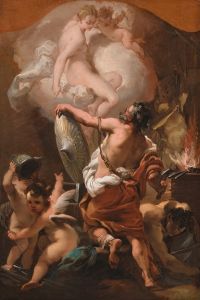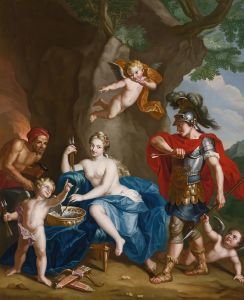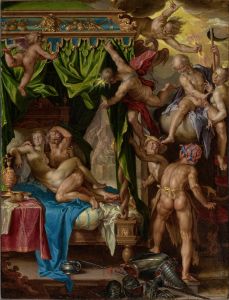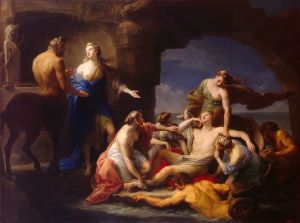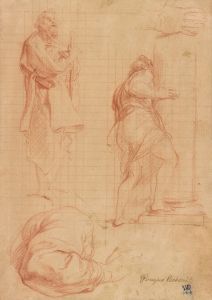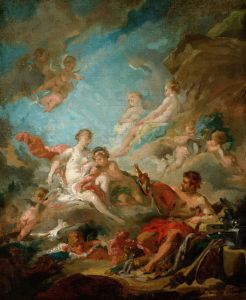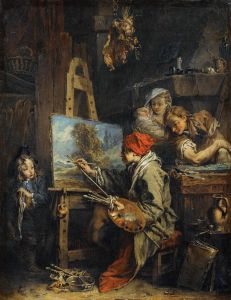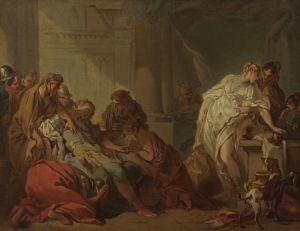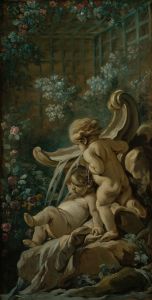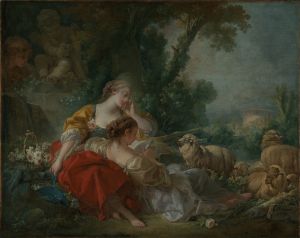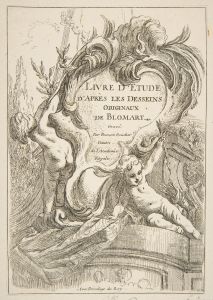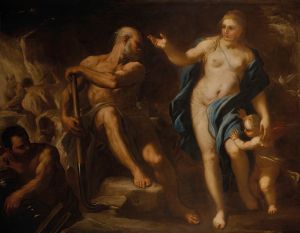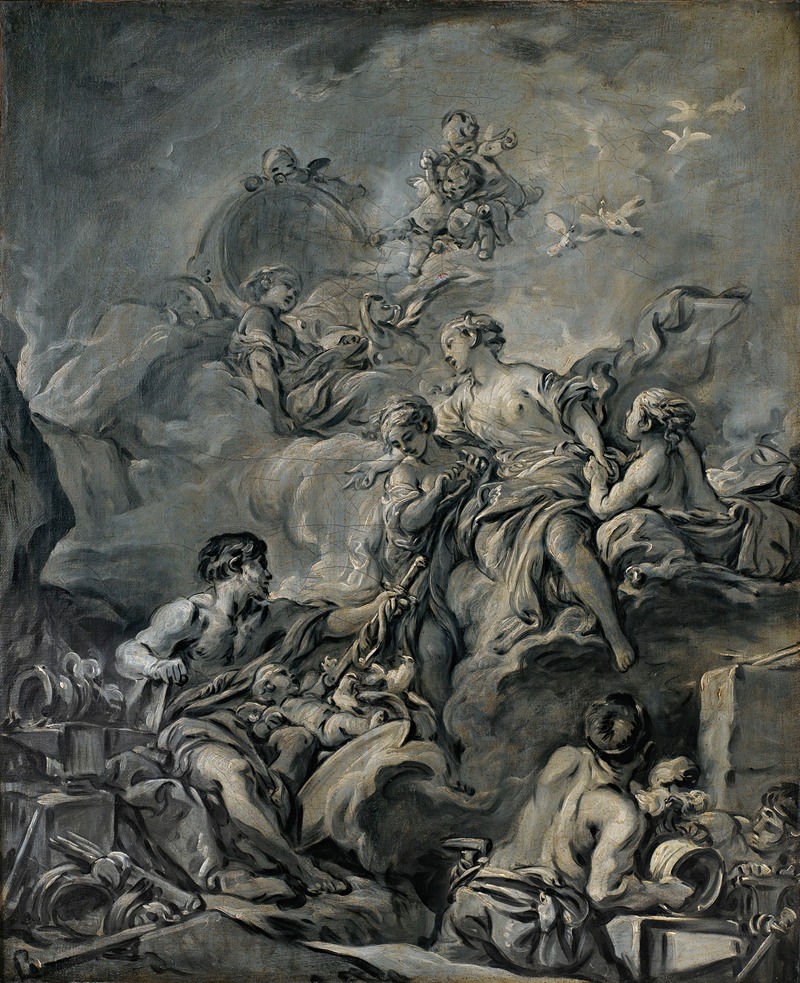
Venus Ordering Weapons From Vulcan
A hand-painted replica of François Boucher’s masterpiece Venus Ordering Weapons From Vulcan, meticulously crafted by professional artists to capture the true essence of the original. Each piece is created with museum-quality canvas and rare mineral pigments, carefully painted by experienced artists with delicate brushstrokes and rich, layered colors to perfectly recreate the texture of the original artwork. Unlike machine-printed reproductions, this hand-painted version brings the painting to life, infused with the artist’s emotions and skill in every stroke. Whether for personal collection or home decoration, it instantly elevates the artistic atmosphere of any space.
"Venus Ordering Weapons from Vulcan" is a notable painting by the French Rococo artist François Boucher, completed in 1732. Boucher, born in 1703, was a prominent figure in the Rococo movement, known for his idyllic and voluptuous paintings that often depicted classical themes with a playful and sensuous touch. This particular work exemplifies Boucher's mastery in combining mythological subject matter with the decorative elegance characteristic of the Rococo style.
The painting illustrates a scene from Roman mythology, where Venus, the goddess of love and beauty, is depicted visiting Vulcan, the god of fire and metalworking, in his forge. According to myth, Venus requests Vulcan to forge weapons for her son, Cupid. This narrative provided Boucher with the opportunity to explore themes of love, beauty, and craftsmanship, all central to the Rococo aesthetic.
In "Venus Ordering Weapons from Vulcan," Boucher employs a soft color palette and delicate brushwork to create a light, airy atmosphere. Venus is typically portrayed as an idealized figure of beauty, often scantily clad, emphasizing her divine allure. Vulcan, in contrast, is depicted as a robust figure, surrounded by the tools of his trade, highlighting his role as a skilled artisan. The interplay between the two figures not only underscores the thematic elements of love and labor but also showcases Boucher's ability to render textures and forms with finesse.
The composition is carefully balanced, with Venus often positioned prominently to draw the viewer's eye, while Vulcan and his forge provide a dynamic backdrop. The inclusion of cherubs or putti, common in Boucher's work, adds a playful element to the scene, enhancing the overall charm and whimsy of the painting.
Boucher's work was highly sought after in his time, and he enjoyed the patronage of influential figures, including Madame de Pompadour, the official chief mistress of King Louis XV. His paintings, including "Venus Ordering Weapons from Vulcan," were celebrated for their decorative appeal and their ability to convey complex mythological stories with elegance and clarity.
This painting is a testament to Boucher's skill in blending narrative content with the ornamental style of the Rococo period. It reflects the 18th-century fascination with classical mythology, interpreted through a lens of beauty and sensuality. Boucher's work remains influential, offering insight into the artistic and cultural milieu of his time.
Today, "Venus Ordering Weapons from Vulcan" is appreciated not only for its artistic merit but also as a representation of the Rococo era's ideals and aesthetics. Boucher's ability to capture the essence of mythological tales with grace and sophistication continues to be admired by art historians and enthusiasts alike.






